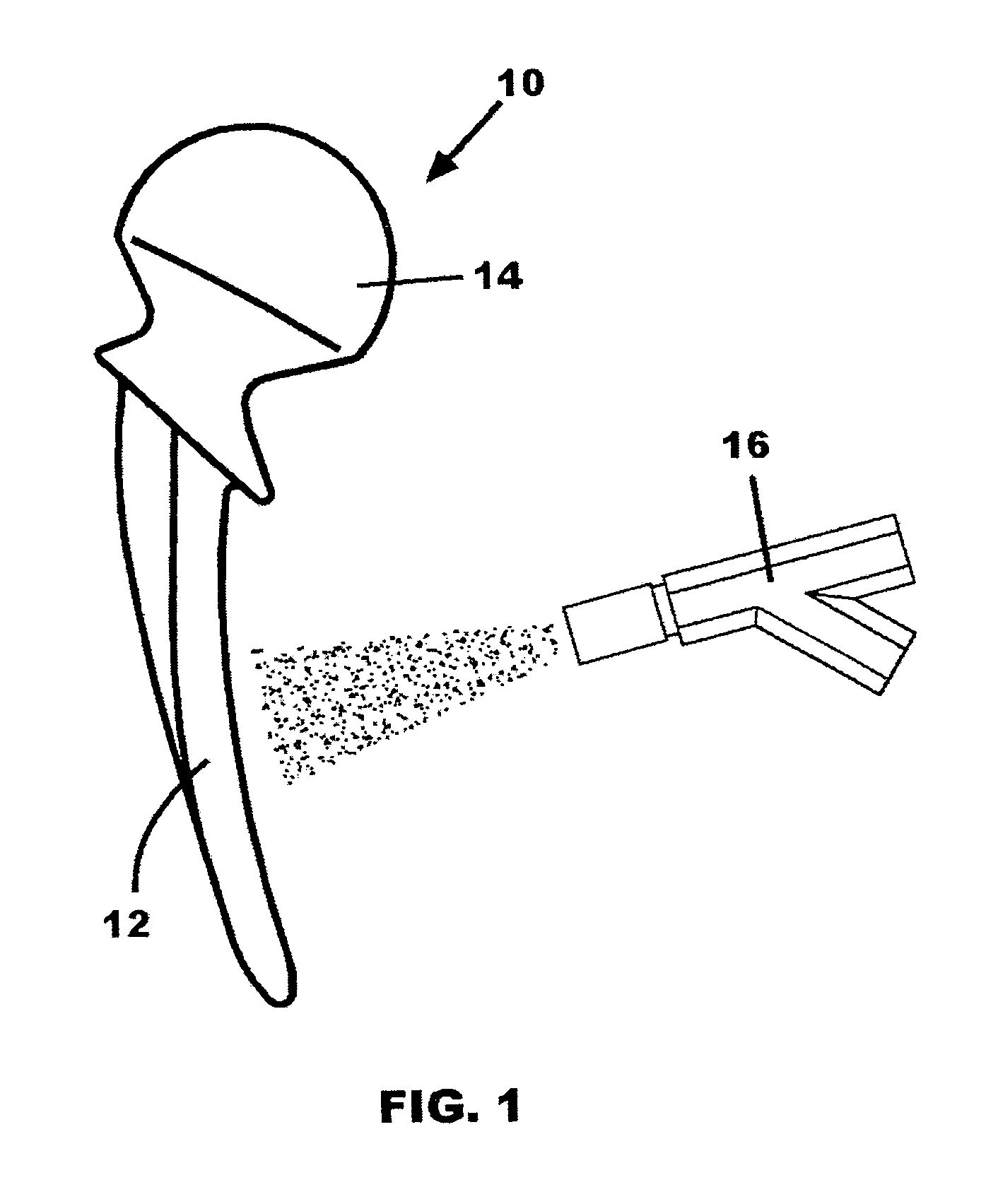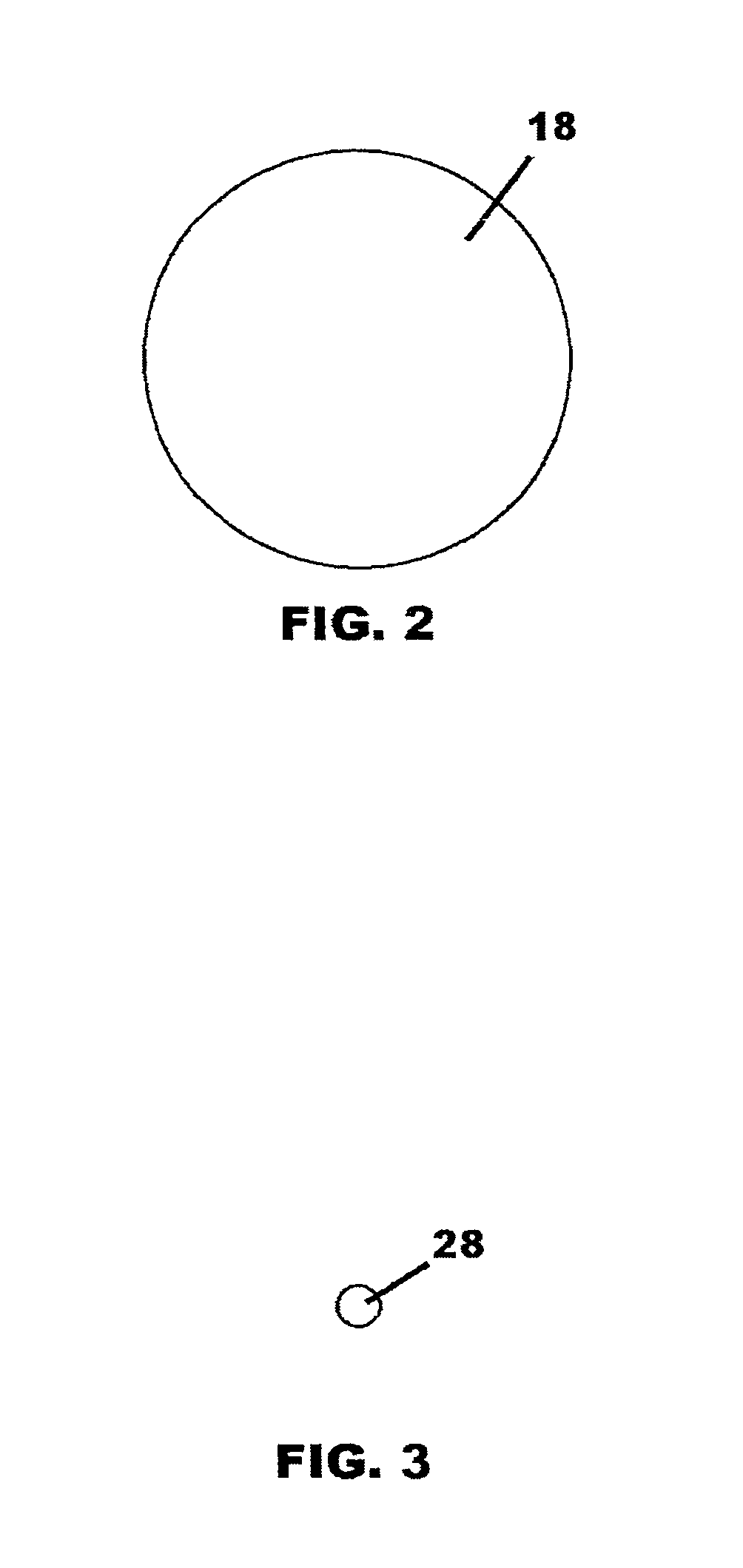Shot peening of orthopaedic implants for tissue adhesion
a tissue adhesion and orthopaedic technology, applied in the field of orthopaedic implants, can solve the problems of difficult and expensive surface treatment methods, insufficient roughness of implants that will interlock with hard tissue etc., to achieve the effect of easy control to achieve the desired effect, simple and inexpensive, and less easily controlled
- Summary
- Abstract
- Description
- Claims
- Application Information
AI Technical Summary
Benefits of technology
Problems solved by technology
Method used
Image
Examples
Embodiment Construction
[0012]Referring now to FIG. 1, a typical orthopaedic implant is illustrated at 10. The implant 10 as illustrated is a femoral prosthesis used in hip replacement surgery. The implant 10 includes a stem 12, which is implanted within the patient's femur, and a ball 14 mounted upon the stem 12 but which projects from the patients femur and engages a compatible prosthesis (not shown) mounted on the patient's pelvis. Since only the stem 12 is implanted within the femur, and thus it is desired that soft tissue adhere only to the stem 12, only the stem 12 is to be treated as described herein. A conventional shot peening gun used to treat the implant 10 is illustrated at 16 and is connected to a source of compressed air (not shown) and to a source of conventional shot or of microbead as will be discussed hereinafter. The shot or microbead is mixed with the air stream from the compressed air source by conventional apparatus assuring that the shot or microbead is mixed with the air stream so t...
PUM
| Property | Measurement | Unit |
|---|---|---|
| diameter | aaaaa | aaaaa |
| diameter | aaaaa | aaaaa |
| diameter | aaaaa | aaaaa |
Abstract
Description
Claims
Application Information
 Login to View More
Login to View More - R&D
- Intellectual Property
- Life Sciences
- Materials
- Tech Scout
- Unparalleled Data Quality
- Higher Quality Content
- 60% Fewer Hallucinations
Browse by: Latest US Patents, China's latest patents, Technical Efficacy Thesaurus, Application Domain, Technology Topic, Popular Technical Reports.
© 2025 PatSnap. All rights reserved.Legal|Privacy policy|Modern Slavery Act Transparency Statement|Sitemap|About US| Contact US: help@patsnap.com



